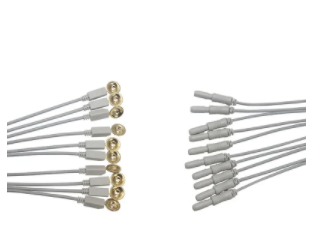How to prevent wires and cables from catching fire due to overloaded wires!
During the operation of the wire and cable, heat will be generated due to the existence of resistance. The resistance of the wire is generally very small, and its heating power can be expressed by the formula q=I^2R. q=I^2R shows that: for a piece of wire in actual use (R is basically constant), the greater the current passing through the wire, the greater the heating power; if the current is constant, the heating power of the wire is also constant. . The heat released during operation will be absorbed by the wire itself, causing the wire temperature to rise. Although the wire is constantly absorbing the heat released by the current and doing work during the operation, its temperature will not rise unlimitedly. Because the wire is absorbing heat, it is also continuously releasing heat to the outside world. The fact shows that the temperature of the wire gradually rises after the wire is energized, and finally the temperature is constant at a certain point. At this constant point, the heat absorption and heat release power of the wire are the same, and the wire is in a state of thermal equilibrium. There is a limit to the ability of conductors to withstand higher temperature operation, and operation beyond a certain maximum temperature can be dangerous. This maximum temperature naturally corresponds to a certain maximum current, and the wire running beyond this maximum current is overloaded. Overloading the wire directly increases the temperature of the wire itself and its surrounding items. The rise in temperature is the most direct cause of such fires.
Overload damages the insulation layer between the two-strand wires, causing a short circuit, burning the equipment, and causing a fire. The double-strand wires are separated by the insulating layer between them, and the overload will soften and destroy the insulating layer, which will cause the direct contact of the two-strand wires to cause a short circuit and burn the equipment. At the same time, the high temperature generated by the high current at the moment of the short circuit causes the line to catch fire and fuse, and the generated molten beads fall to the combustible material and cause a fire. The overload temperature rise can also directly ignite nearby combustibles. The heat transfer of the overloaded wire increases the temperature of the nearby combustibles. For the nearby combustibles with lower ignition points, it is possible to ignite them and cause a fire. This danger is particularly prominent in warehouses where flammable materials are stored and buildings with easy-to-use and combustible decorations.
Overloading also exposes connections in the line to overheated conditions, which accelerates the process of oxidation. Oxidation produces a thin oxide film that is not easily conductive at the connection points, and the oxide film increases the resistance between the contact points, resulting in sparks and other phenomena, causing fires.
So, how to prevent fire caused by overloading of wires and cables?
1. In the process of line design, the capacity of the site should be accurately checked, and the possibility of adding new capacity in the future should be fully considered, and the appropriate type of wire should be selected. If the capacity is large, thicker wires should be selected. Circuit design and reasonable selection are the key steps to prevent overload. If the design is improperly selected, there will be congenital hidden dangers that are difficult to rectify. Some small projects and places are not carefully designed and selected. It is very dangerous to choose and lay the lines at will. New electrical appliances and electrical equipment should fully consider the bearing capacity of the original lines. If the original line does not meet the requirements, it should be redesigned and reconstructed.
2. The lines should be constructed and laid by qualified electricians in accordance with relevant specifications. The laying conditions of the lines directly affect the heat dissipation of the wires. Generally speaking, the line laying should not pass through easy, combustible materials and stacking, which will lead to poor heat dissipation of the wires, heat accumulation, the possibility of igniting the surrounding combustible materials, and increase the risk of fire caused by overloading; The lines laid in the ceiling of the decoration of public entertainment places should be protected by steel pipes, so that the ceiling is separated from the lines, and even if there are molten beads under overload, short circuit, etc., it will not fall off, so as to avoid fire.
3. Strengthen power management, avoid random wiring and wiring, and use mobile sockets with caution. Random wiring, random wiring, and the use of mobile sockets are actually adding electrical equipment to a certain section of the line, increasing the amount of current and possibly causing overload. The mobile socket jacks are obviously more than the fixed sockets on the wall. If too many electrical equipments are used on the mobile sockets, the original circuit will be unbearable. For high-power equipment and electrical appliances, separate lines should be set up, and mobile sockets should not be used as wiring sources.
Post time: Sep-06-2022


